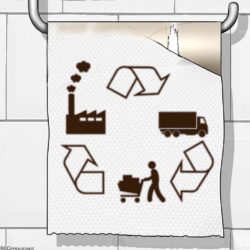One supplier or several?

Many supply chain executives have been able to prove their worth since the early 2020s, during disruptions including factory shutdowns in China, the obstruction of the Suez Canal, the shift to online shopping (and back again), and the shift from hospitality to supermarkets (and back again). And last year, all the chaos was compounded by Russia’s invasion of Ukraine and subsequent sanctions.
Given the enormous geopolitical and public health-related disruptions over the past three years, it is an amazing feat that the vast majority of store shelves remained filled for virtually the entire period. There have been temporary disruptions, of course, and some of them were lengthy. Needless to say, those shortages partially contributed to high inflation. But, broadly speaking, supply chain directors and their teams have done a fantastic job in extremely turbulent times.
Meanwhile, many companies are now spreading their supply risk. One way is to add a second supplier. Since as far back as the 1970s, the concept of dual sourcing has been regarded as a very robust supply chain solution; very high reliability can be achieved with only limited back-up. In supply chain training programmes worldwide, therefore, the dual-sourcing concept is taught as one of the most efficient and effective ways to achieve supply chain reliability under uncertain conditions.
Prioritizing in times of disruption
However, recent research highlights an aspect that is rarely considered in supply chains: the supplier’s own decision about who to prioritize in the event of supply chain disruption. A group of economists in India studied supplier behaviour after the borders between some states in India were closed during the pandemic, and customers were suddenly no longer able to obtain their components.
According to the dual-sourcing theory, customers who have multiple suppliers should suffer less impact. However, the Indian researchers’ data reveals that suppliers who know their customers are fully dependent on them will try to help them first. This implies that, when it comes to resilience, a close relationship with a supplier can be just as important as working with multiple suppliers as part of ‘smart’ supply chain design. This appears to be an important explanation for early recovery, especially in more complex chains. After all, it is much more difficult to work with multiple alternative suppliers for complex products.
Single-sourced supplier supports supply chain resilience
In a nutshell, the findings from this study highlight that supply chain resilience can be strengthened by single-sourced supplier behaviour, as well as by having multiple suppliers as back-ups. It is important to emphasize that this is particularly true for more complex chains in which it is more difficult to work with alternative suppliers.
While further research is needed to determine how best to apply these insights, explicit modelling of disruption scenarios based on single-sourced suppliers suggests that this strategy can be just as effective as dual sourcing – unless the government forces that single source to stop supplying, that is. Which just happens to be the consequence of sanctions…
Jan Fransoo, Professor of Operations and Logistics Management at the Tilburg School of Economics and Management








